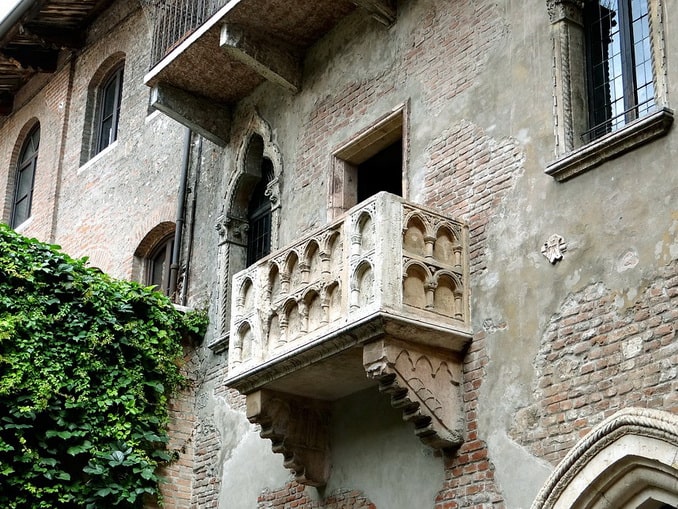
What to see in Verona on your own? Most interesting attractions, routes, ticket prices 2023. Where it is better to stay in Verona for 1 or 2 nights – found out good Time for Trip.
Verona is a major city in the Italian region of Veneto. Clearly smaller than Venice, but also extremely popular with tourists.
Verona has one extremely famous attraction – Juliet’s house. As well it owns several lesser known sights.
The first, however, is quite enough to ensure an inexhaustible flow of travelers. That stretches here from all countries of the world and at any time of the year. And so powerful that the human river sometimes overwhelms the streets.
It’s time to be amazed at such a number of romantics and adherents of eternal love, literally flying on their wings into the courtyard at Via Cappello, 23.
But there is no need to follow them – why trail at the tail of the column? It’s much more correct to look at Verona from a different angle, having previously enlisted the help of a nice local guide!
And walk not along the streets where the human river will bring you. But along a thoughtfully designed route.
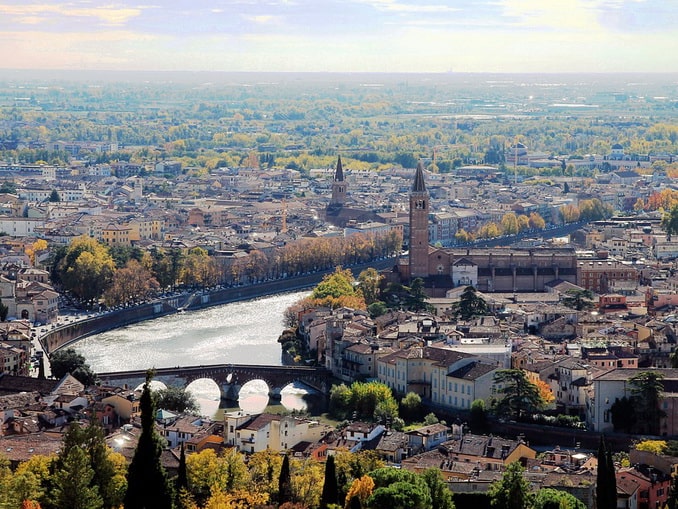
Verona Top Attractions
Juliet’s house is the must visited sight of the city and the first place that a tourist wants to see in Verona. Do not argue – it has been and will be so in the foreseeable future.
Many tourists come to Verona even during the Carnival in Venice! Despite the usually far from the best weather!
In fairness, the ex-palazzo of the Capello family, dating from the 14th century, looks extremely presentable. And a balcony on which the views of travelers are concentrated – just the epitome of medieval Italy.
You can enter the courtyard for free. The museum, flaunting reconstructed and well-groomed interiors (“not breathing” with antiquity), lets you inside for a fee.
Quite modest although: 6 € is asked for an adult ticket. And only 1 € must be paid for a child aged 8-14 years!
With VeronaCard you can visit Juliet’s residence for free – asadigiulietta.comune.verona.it/nqcontent.cfm?a_id=43610&tt=museo
Working Hours
- on Monday from 13:30 to 19:30
- from Tuesday to Sunday from 8:30 to 19:30
- Closed January 1st and December 25th.
By creating a museum of the “name of great love” in an old mansion and spreading the rumor that Capello is the prototype of the Capuleti, the town authorities somewhat calmed the passions. By streamlining the flow of tourists, eager to see the main attraction of Verona.
Previously foreigners randomly wandered the streets. And harassed the locals with a question in broken English: “Where did Juliet live”?
A balcony overlooking the courtyard was added only in the 20th century. And evem later a bronze statue of Juliet was added. Her chest today is shamelessly (for good luck!) rubbing tourist hands.
By the way, there is not a word about the balcony in Shakespeare’s play. And historians have found out that this architectural detail was not suspected at the time of Shakespeare in England.
By the way, the great English playwright never seemed to be in Verona. Probably, he did not leave the borders of England at all …
However, despite the fact that the story told in the play is pure fiction, not based on any real events or human destinies, the Italian city has long been a place of real pilgrimage. So much so that today a whole team is answering letters sent to the mythical Juliet.
A combined ticket, which includes a visit to the “Tomb of Juliet” in the basement of the monastery of San Francesco al Corso, will cost 7 € in 2022. In the room at Via del Pontiere, 35, however, you will see only a red marble sarcophagus.
Piazza delle Erbe
Debunking Julietophane’s fantasies, we set off for the next sight of Verona. Namely – in the heart of the Centro Storico, on Piazza delle Erbe. It is located on the site of the ancient Roman Forum!
In the center is the Edicule of Berlin. Where decrees and sentences were announced, and government positions were taken. And a little to the north is based the fountain of 1368 with the Verona Madonna. A marble statue of the Roman era, repurposed for Christian needs.
In the northern part of the square, the lion of St. Mark, the emblem of the former Venetian rulers of Verona, settled on a marble column. Standing directly in front of the facade of the baroque Palazzo Maffei built in 1668.
To its left rises the brick Torre del Gardello of 1370. And the northeast corner is decorated with the house of Mazzanti. Built in the 14th century under the Scaligers. You will recognize it for sure: the walls are painted with beautiful Renaissance frescoes.
The Casa dei Mercanti, the Domus Mercatorum, looks like a typical 14th century building. Actually it is a replica created in the 19th century. But successful – indistinguishable from the original!
Piazza dei Signori
Through the arch from Piazza delle Erbe is Piazza dei Signori. In the center of which there is a monument to Dante Alighieri. As Verona has the moral right to establish it.
After all, the city once sheltered a Florentine poet! Who was sentenced to death in absentia in the homeland of the Renaissance.
The Palace of Justice, the Gothic Palazzo della Ragione on the south side of the square, was built in 1193. The main Renaissance facade of the building dates from the beginning of the 16th century.
In the yard there is a beautiful front staircase. The entrance to Torre dei Lamberti is also located here.
The partly striped Lamberti Tower, 84 meters high, is the main high-altitude landmark of Verona. It was erected at the expense of a wealthy Verona family in the 12th century.
In 1403, a lightning strike partially destroyed the tower. But it was quickly rebuilt, crowned with an elegant octagonal pergola at the top.
Tower Works
- 10:00 – 18:00 on weekdays
- 11:00 – 19:00 on weekends and public holidays
- Closed on December 25th.
A combined entry ticket costs 8 € for adults and 5 € for children aged 8-14. You can walk up to the top – it’s worth it because the views are breathtaking. Those who are too lazy to stomp the steps can take the glass elevator.
Palazzo del Podesta on the other side of the square former residence of the Scaligers. In Venetian times, the austere brick wall of the feudal fortress was adorned with the snow-white arch of Sanmichele. Above which, as expected, the marble lion of St. Mark also settled.
The Cansignorio Palace appeared on the square in the 14th century. The Venetians in the 16th century erected elegant two-story Loggia of the Council. By the way, it is one of the best examples of early Renaissance architecture.
Scaligers and Romeo’s House in Verona
The famous Scaliger Arches rise near the church of Santa Maria Antica. That is, right at the exit from Piazza della Signoria.
Santa Maria Antica was a family church for the powerful della Scala family, who ruled Verona in the 13th-14th centuries. And there is nothing surprising in the fact that its representatives were buried here.
There are three arches in total: Cansignorio, Cangrande I and Mastino II. The resting places of the rest of the family are decorated more modestly.
Guidebooks recommend looking for the symbol of the ladder (scala), which was the family’s heraldic emblem
You will not be able to see Romeo’s house, as it is privately owned. But tourists are still stubbornly waiting for something at the wall at Via Arche Scaligere, 2. And some, especially inspired, even wrote on the wall with their “immortal” comments.
The appearance of the outer wall of the residence of Montecchi with battlements a la “dovetail” gives a clear idea that the manners in medieval Verona were very cruel. And construction of real fortresses in the center of the city was a logical precaution.
Where to Stay in Verona
We advise you to choose a hotel or apartment outside the old city. For there
- firstly – expensive
- and secondly, it’s noisy.
During the high season endless crowds of tourists flow through the streets all day long. And even at night you will meet a completely unromantic number of citizens loitering around.
In general, turn your benevolent attention to something relatively inexpensive like Corte Merighi Charming Rooms 10 minutes walk from the center of Verona. And book a room well in advance – closer to the dates you need, you will have to stay somewhere in the periphery.
Day 2
What to visit in Verona when you are done with the famous balcony? Not so little – 1 day is definitely not enough!
We would recommend starting excursions on the second day of your stay at such attractions as Castelvecchio (Corso Castelvecchio 2) and the Scaliger Bridge.
Scaligere family built the fortress on the outskirts at the end of it’s reign in the city. It covers the bridge along which the rulers, if anything, intended to run. By the way, today you can’t get to the bridge from the fortress!
A tourist will discover within the walls of Castelvecchio the main city museum, which has a very rich collection. Particularly noteworthy are the excellent canvases by Tintoretto and the portrait of a woman by Rubens. The famous gem of the collection is “Portrait of a Boy with a Drawing of a Doll” by Giovanni Caroto.
Castelvecchio is open:
- on Mondays from 13.30 to 19.30
- from Tuesday to Sunday from 8.30 to 19.30 (entry until 18.45)
- Ticket price: 6 € – adult, only 1 – child: museodicastelvecchio.comune.verona.it/nqcontent.cfm?a_id=42718&tt=museo
You can purchase combined entrance tickets (5-7 €). That allow you to visit also the Maffei Lapidarium Museum as well. The main highlight of the collection is ancient artifacts
The exact address of the museum: Piazza Bra, 28. And the square itself – the main one in the city – spreads out at the foot of the Arena di Verona.
Arena of Verona
The gladiatorial amphitheater – which is remarkable – is older than the Flavian arena in Rome, the famous Colosseum. The year of his birth is 30 AD. Today, the space inside is a huge open-air concert hall.
In summer here give concerts and opera performances. And they are incredibly popular!
In the off-season, however, tourists still stand in line. Then they pay ten euros for entry and see the ancient ruins from the inside.

Decorated with battlements a la “dovetail” (a striking sign of the castles of the Ghibellines, that is, opponents of the popes), the arches of Portoni dela Bra remind that a city wall passed in this place during the reign of the Milanese Dukes of Visconti.
Churhes
San Zeno Maggiore, located on the same bank of the Adige as Castelvecchio, is an exceptionally interesting Romanesque basilica. Dating back to the 10th century, largely preserved the original architecture.
The Cathedral (Piazza Vescovado) is an interesting example of a Romanesque style with a Gothic filling. Getting from Piazza Bra is not very convenient. But to inspect it inside, once in Verona, you should definitely!
After all, the interior is decorated with the masterpiece “Assunta” by Titian. Created immediately after the success of the “Assumption of the Virgin Mary”. That located today in the Venetian church of Frari. The visit of the Verona Cathedral costs 3 €.
One way or another, you still have to go to this corner of the city. Since you cannot personally visit the Ponte Pietra bridge, built by the Romans in the 1st century BC. is actually a crime.
In addition, you can cross to the other side of the Adige. To take a look at the Roman theater, which was opened only in the 20th century. And the Austrian fortress of San Pietro proudly looking at the city from the hill. From above, by the way, such views open up that you will inevitably sway!
Archaeologists claim that it was at this point that Verona was once founded. And only then the city and its inhabitants stole down to the river. And then they moved to the other side of it.
© Goodtimefortrip.com


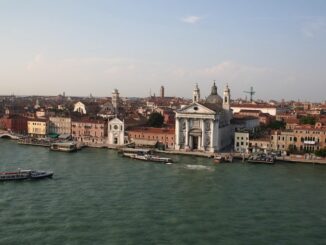
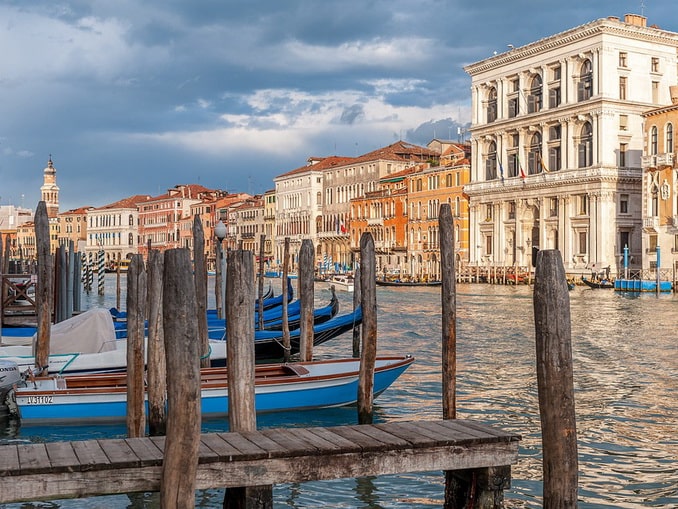
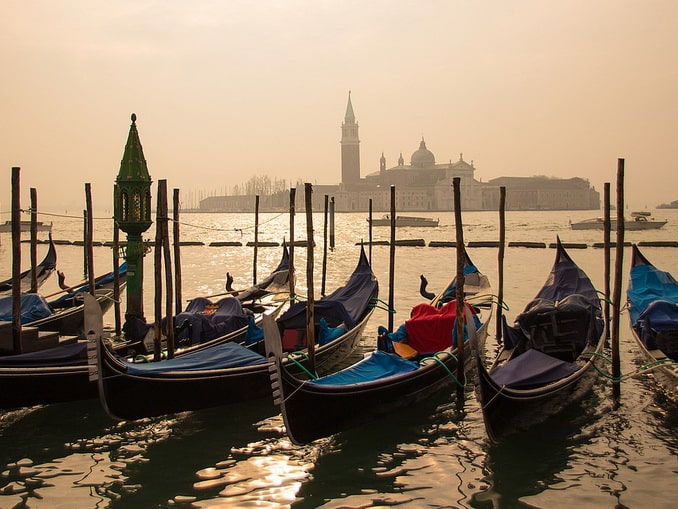
Be the first to comment